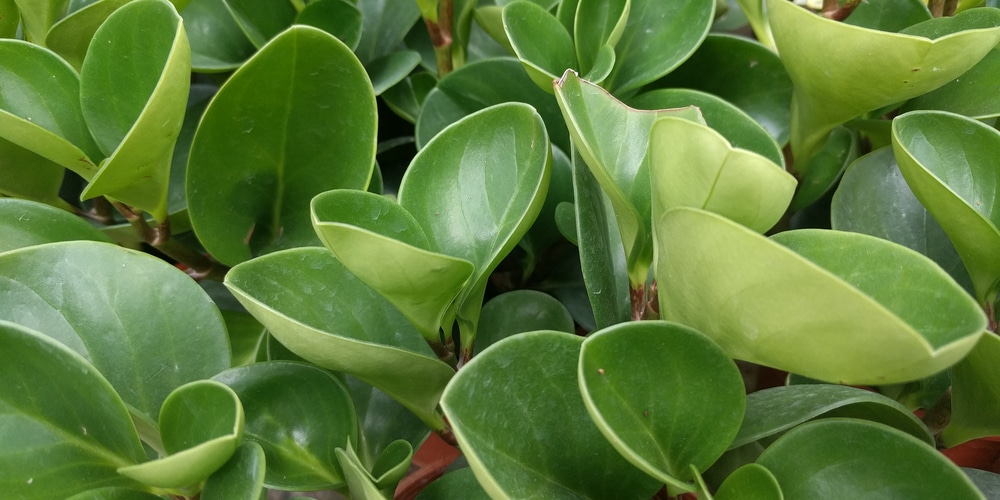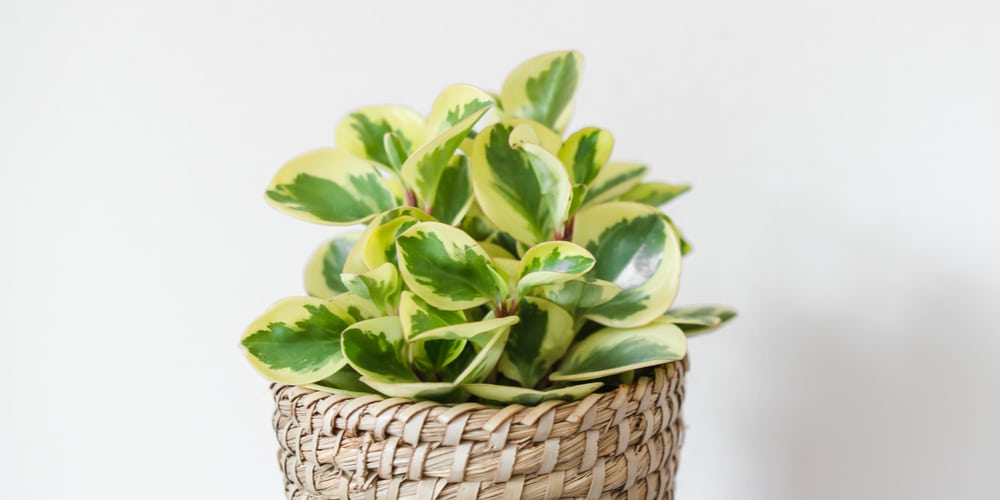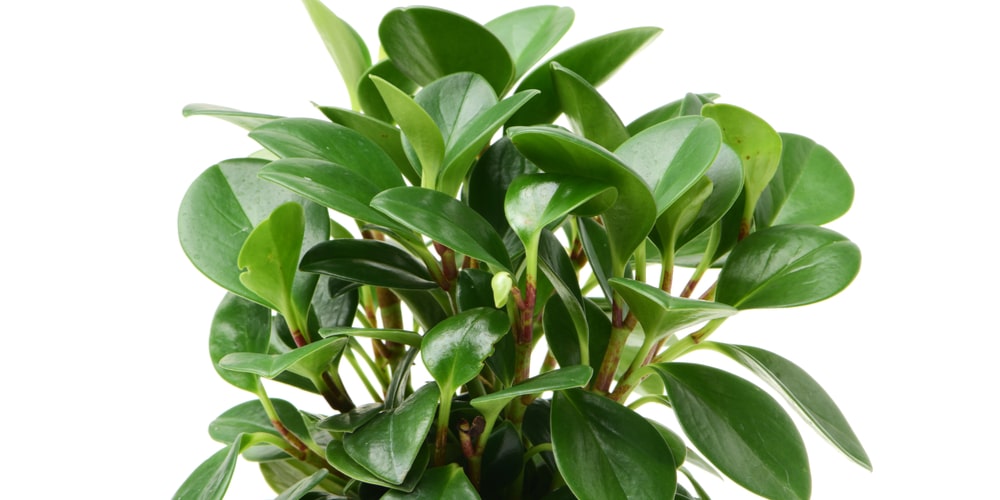Peperomia Obtusifolia is a lush and bright-green house plant you should consider adding to your interiors to add a splash of color to your house. Also known as Baby Rubber Plant, this variety of peperomia is part of a genus including more than one thousand species.
Peperomia Obtusifolia’s most attractive characteristic is its thick and waxy foliage, which resembles a succulent (but it is not). If you want to learn more about this stunning plant and how to take care of it, you’ve landed in the right place.
| Botanical Name | Peperomia Obtusifolia |
| Common Name | Baby Rubber Plant or Pepper face plant |
| Plant Type | Perennial or Annual |
| Flower Color | The plant produces flowers in the form of green spikes with a white top. |
| Size When Mature | 10-12 inches high |
| Bloom Time | Between spring and fall |
| Sun Requirements | Moderate, Indirect Light or Partial Shade |
| USDA Hardiness Zones | 10-12 |
| Soil PH Range | 6.0-6.6 |
| Soil Type | Well-draining, fertile, and loamy |
| Water Needs | Medium (these plants like moisture, but you’ll need to let the soil dry between waterings) |
| Native Area | South American rainforests |
What you Need to Know About Peperomia Obtusifolia
If you are looking for an easy-to-care, jungly looking houseplant, you should consider adding Peperomia Obtusifolia in your house. If you live in a warm enough region (USDA hardiness zones between 10 and 12), you can grow these stunning plants outdoors.
While the plants also produce flowers in the form of spikes, their best part is their foliage. For this reason, if you notice blooming coming out of your plant, you should pinch them: doing so will allow your peperomia to focus its energy on growing foliage rather than blooms.
Peperomia Obtusifolia’s leaves are oblong and waxy: their texture allows them to retain water for longer, making them relatively low-maintenance.
If you have pets (or kids), don’t worry! This plant is safe and non-toxic to animals and humans. Still, you might want to prevent your animals from munching on their leaves, as indigestion can cause vomiting or diarrhea (or both!)
How to Care for Peperomia Obtusifolia
Does this plant sound too good to be true? Well, read the following sections. Here, you’ll learn everything you must know for growing a thriving Peperomia Obtusifolia. You’ll be surprised at how easy it can be.
Light
These plants aren’t as demanding with light as other houseplants can be. This variety of Obtusifolia tends to adapt to various lighting conditions. However, place them under moderate and indirect sunlight for best results. You can locate them in a container next to a window to allow them to get all the light they need for photosynthesis.
While Peperomia Obtusifolias can also live in light-deprived conditions, leaves might stop growing: you’ll get a less dense and bushy plant. For a better aesthetic effect, make you give your plant adequate light. If you don’t have space in a bright room, consider getting a grow light.
If you prefer placing your plant outdoors, protect its leaves from direct sunlight: it can cause discoloration and dryness.
Water and Soil Needs
Baby rubber plants do well in rich and well-draining soil: you can use a general potting mix and add perlite or peat moss to increase water retention and improve drainage. The ideal pH levels are between 6.0 and 6.6. Also, if your soil is poor, consider adding compost or manure. Because of its thick leaves, this plant doesn’t like to be soggy.
If you decide to plant your Peperomia outdoors, consider adding some mulch around the base of your plant. Doing so will regulate the temperature of the soil and keep your peperomia moist for longer.
Water your baby rubber plants once per week. However, keep in mind that temperature, wind, and humidity levels might cause you to increase (or decrease) the frequency.
Temperature Requirements
Peperomia Obtusifolia is a tropical plant. For this reason, it prefers warm and humid environments. The optimal temperatures for its growth fall between 65 and 80°F. Thus, it is perfect for growing indoors.
Your plants will struggle at temperatures below 50°, so avoid exposing them to such conditions. You can grow your peperomias outdoors only if you live between USDA zones 10 and 12. And even under such circumstances, you might have to move your plants indoors if temperatures drop.
Don’t forget about humidity! Because of their natural habitat, these plants need constant moisture. You can raise humidity by misting their leaves with water two to three times per week. Alternatively, place your plants in the bathroom: it usually is the best location for humidity-loving plants. Consider getting a humidifier for even better results.
Fertilizer
Peperomia Obtusifolia isn’t a heavy feeder. And that is good news, especially if you don’t have much time to spend on your plants. Still, your plant will, for sure, benefit from some extra nutrition from time to time. Consider adding an all-purpose fertilizer once or twice a month during the growing phase (spring and summer). Avoid overdoing it, and don’t add anything during the summer to prevent causing damage to your peperomia roots.
Common Diseases
These plants are the ideal option for beginners for a variety of reasons. As you can see, taking care of them isn’t hard. Plus, they are tolerant of most diseases. But it is always a good idea to keep an eye out for pests and diseases. The earlier you take action if you see something off, the minimum damage you’ll cause to your plant.
Over and under-watering might also be an issue with these plants. If you notice browning, wilting, or yellowing, you might have to adjust your watering schedule.
Peperomia Obtusifolia Propagation
If you have a thriving Peperomia Obtusifolia in your house, you might want to add a couple more around your home or gift a plant to your friends. The good news is that propagating these plants is relatively easy. You can achieve successful results by propagating your peperomia through leaves or cuttings.
To propagate your plant by leaf, take a healthy-looking leaf and cut it through its veins. Push the parts you’ve created into fertile and well-draining soil and be patient: you will see some new growth in about a month. Don’t forget to keep the container moist!
Alternatively, you can propagate your plant through stem cutting. Take a stem about four to six inches long with a couple of leaves and place it in water or potting mix. Consider speeding up the process by adding rooting hormone and wrapping your container with a plastic bag to increase humidity and temperature.
How to Prune Peperomia Obtusifolia
Pruning Peperomia Obtusifolia isn’t necessary. However, if you’d prefer it to grow into a neat shape, you might have to remove a couple of branches. Also, remove old and floppy stems to encourage new growth and ensure proper airflow.


